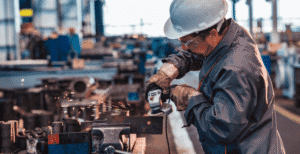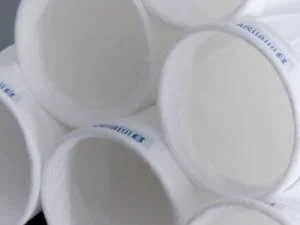Metal dust collection is a critical safety concern in various industries, from fabrication shops to large-scale metal processing plants. Fine particles generated during grinding, cutting, polishing, or welding metals can pose significant health hazards and fire or explosion risks if not properly controlled. To ensure workplace safety and regulatory compliance, organizations must understand and adhere to the standards set by the Occupational Safety and Health Administration (OSHA) and the Asosiasi Perlindungan Kebakaran Nasional (NFPA).
These two regulatory bodies provide clear guidelines for the management, collection, and disposal of combustible and hazardous metal dust. Following these standards not only reduces operational risks but also supports safe working environments and protects valuable equipment and infrastructure.
What Makes Metal Dust Dangerous?
Unlike general dust, metal dust can be highly reactive and combustible, depending on its composition and particle size. Metals such as aluminum, magnesium, titanium, and zirconium are particularly known for their explosiveness when in dust form. When suspended in air at certain concentrations, these fine particles can ignite under the right conditions—posing risks of flash fires, dust explosions, and secondary explosions if containment and mitigation measures are not properly in place.
The explosive nature of metal dust makes it a unique challenge, one that OSHA and NFPA address with specific and evolving safety standards.
OSHA’s Role in Regulating Metal Dust
OSHA sets forth guidelines to minimize the risk of workplace accidents due to airborne contaminants and combustible dust. While there is no single OSHA standard exclusively covering combustible dust, relevant regulations exist under the General Duty Clause (Section 5(a)(1)), which requires employers to maintain a safe workplace.
Specific OSHA standards that affect metal dust collection include:
29 CFR 1910.94 – Ventilation requirements for controlling harmful dusts and fumes.
29 CFR 1910.1000 – Limits on permissible exposure to air contaminants, including metal particulates.
29 CFR 1910 Subpart H – Hazardous materials handling and storage.
29 CFR 1910.22 – Housekeeping requirements to prevent dust accumulation.
Employers must conduct hazard assessments, provide adequate ventilation and dust collection systems, and ensure proper training and PPE for employees handling metal dust.
NFPA Standards on Combustible Metal Dust
The National Fire Protection Association (NFPA) has published specific codes that offer a deeper and more detailed approach to managing combustible dust hazards, particularly for metals. Key standards include:
- NFPA 484: Standard for Combustible Metals – Focuses specifically on fire and explosion hazards of combustible metals, including dust and powder.
- Standar NFPA 652: Standard on the Fundamentals of Combustible Dust – Provides a framework for identifying and managing dust hazards.
- NFPA 68 & NFPA 69: Standards for explosion venting and explosion prevention systems.
NFPA 484 requires facilities to conduct a Dust Hazard Analysis (DHA), maintain proper equipment spacing, use explosion-proof dust collectors, and implement appropriate fire suppression systems.
These standards are not only about technology—they also enforce best practices around maintenance, cleaning, monitoring, and emergency response planning.
Hubungi kami sekarang
Best Practices for Metal Dust Collection Compliance
To align with OSHA and NFPA regulations, organizations should adopt a comprehensive approach to dust collection and facility design. This includes:
- Installing properly rated dust collectors: Equipment must be suitable for combustible metal dust. Traditional baghouses or cartridge collectors may not be sufficient without additional safety mechanisms.
- Using spark arrestors and isolation valves: These reduce the risk of ignition within the dust collection system.
- Conducting regular dust hazard assessments: Evaluating risk factors and adjusting equipment and practices accordingly.
- Ventilating at the source: Implementing local exhaust ventilation systems that capture dust at its point of generation.
- Maintaining housekeeping: Preventing dust accumulation on floors, beams, and machinery, as this can fuel secondary explosions.
- Training and documentation: Ensuring staff are trained on risks and safety procedures, and that documentation of safety practices is up to date.
Compliance is not a one-time task—it’s an ongoing responsibility that demands regular auditing, maintenance, and updates to systems and processes as per industry advancements.
How Intensiv Filter Himenviro Supports Compliance
At Intensiv Filter Himenviro, we design and deliver customized dust collection systems that help industrial facilities comply with both OSHA and NFPA standards. Our solutions are engineered with a deep understanding of combustible dust dynamics and include features such as:
- Explosion-proof construction
- HEPA filtration where required
- Spark arrestors and flame arrest systems
- Automated pulse-jet cleaning
- Compact, modular designs suitable for retrofit or greenfield installations
We not only provide equipment but also consultation and technical support to ensure every aspect of your dust collection system aligns with regulatory requirements and industry best practices.
Kesimpulan
Understanding and complying with OSHA and NFPA regulations is essential for any industry handling metal dust. These standards are in place not just for compliance, but for protecting workers, equipment, and operations from devastating fire and explosion hazards.
A proactive approach to dust collection—supported by advanced technologies and reliable partners like Intensiv Filter Himenviro—can transform compliance into a competitive advantage. Clean air, safe workplaces, and operational peace of mind are the outcomes of doing things the right way.



